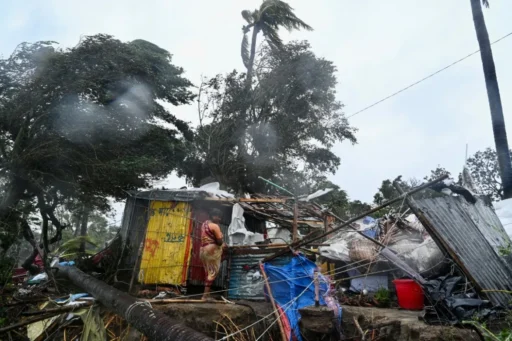
Introduction: Cyclone Remal Hits with Unbridled Fury
In late May 2024, Severe Cyclonic Storm Remal made landfall on the West Bengal–Bangladesh coast near the Sundarbans on May 26, 2024. With wind speeds reaching up to 100 km/h, Remal caused widespread destruction across land and water. At least 85 people died in India—including 65 in West Bengal—and 137 were injured, with many villages submerged by flash floods. The cyclone inflicted nearly $637 million USD (₹5,300 crore) in damage across the region.
Meteorological Journey: From Depression to Cyclone
Remal began as a low-pressure area over the central Bay of Bengal on May 24, intensifying rapidly over two days. As it approached the coastline, the cyclone brought relentless rain, violent winds, and a storm surge that submerged low-lying settlements. The cyclone whipped up debris, uprooted trees, and caused severe coastal erosion in Sundarbans villages.
Its rapid intensification and steep land fall left little time for adequate preparedness in many vulnerable communities across South Bengal and Northeast India.
Human Cost and Community Displacement
The devastation was felt most heavily in:
-
West Bengal: Loss of life, destroyed homes, and village inundation along coastal districts.
-
Bangladesh: Power outages, widespread flooding, and emergency response strain across the delta region.
In India, nearly 8,000 homes were damaged or destroyed, crops were wiped out, and at least 50,000 people were evacuated, many to temporary shelters. The cyclone also left a profound psychological impact as survivors grappled with sudden loss of property, livestock, and livelihoods.
Economic and Agricultural Damage
-
In India alone, damages were estimated at $637 million USD.
-
Numerous fishing communities lost boats and gear, while agricultural losses—especially of rice, vegetables, and mango orchards—in coastal West Bengal reached critical levels.
-
Flooded roads and broken infrastructure isolated remote settlements, delaying aid and rescue operations.
Government Response and Rescue Operations
Both the Indian and Bangladeshi governments responded swiftly. Remal triggered:
-
Evacuation of nearly 30 million coastal residents across both nations.
-
Deployment of NDRF, ODRAF, and local forest rescue teams for search-and-rescue operations.
-
Establishment of temporary relief camps; distribution of food, blankets, and medical aid.
Despite coordinated measures, the scale and suddenness of Remal exposed gaps in coastal infrastructure resilience and disaster planning.
Regional Breakdown & Impact Zones
-
Sundarbans region suffered some of the worst devastation—village clusters were cut off by floodwater and embankment breaches.
-
Howrah, Canning, North and South 24 Parganas districts reported high fatalities, property damage, and crop losses.
-
Northeast Indian states including parts of Assam and Mizoram experienced flash floods, landslides, and power outages, compounding recovery challenges.
Climate Context: Is Weather Getting Worse?
Remal was the first cyclonic storm of India’s 2024 storm season. Experts view it as part of a worrying climate trend:
-
Rising sea surface temperatures in the Bay of Bengal
-
Increased frequency of sudden, intense cyclones
-
Unpredictable monsoon patterns disrupting traditional disaster timelines
Some climatologists argue that storms like Remal are no longer rare anomalies—they are becoming part of a high-intensity cyclone pattern across South Asia.
Challenges Highlighted by Remal
-
Late warnings or abrupt landfall reducing evacuation windows.
-
Coastal embankment failures due to unplanned construction and erosion.
-
Insufficient shelters and basic support in remote villages.
-
Agriculture vulnerability: thousands of farmers lost entire crops within days.
-
Combining factors: climate change, poverty, and poor infrastructure worsened outcomes.
Moving Forward: Building Resilience
-
Strengthen disaster-resilient infrastructure, including embankment reinforcement, mangrove restoration, and elevated shelters.
-
Expand early warning networks with mobile alerts and community-based sirens.
-
Integrate climate projections into urban and coastal planning.
-
Empower local communities, NGOs, and volunteer networks in mitigation strategies such as sandbagging, tree planting, and clean drains.
-
Invest in post-disaster rehabilitation, especially for permanently affected families and farmers.
Final Reflection: Remal Was a Wake-Up Call
Cyclone Remal showed India and Bangladesh that cyclonic seasons are becoming more unpredictable and dangerous. While evacuations saved many lives, loss of life and massive economic harm underline the urgent need for adaptive strategies tuned to intensifying climate signals.
Only proactive policy, community-level planning, and resilient infrastructure will prevent Remal from becoming a template for future crises.